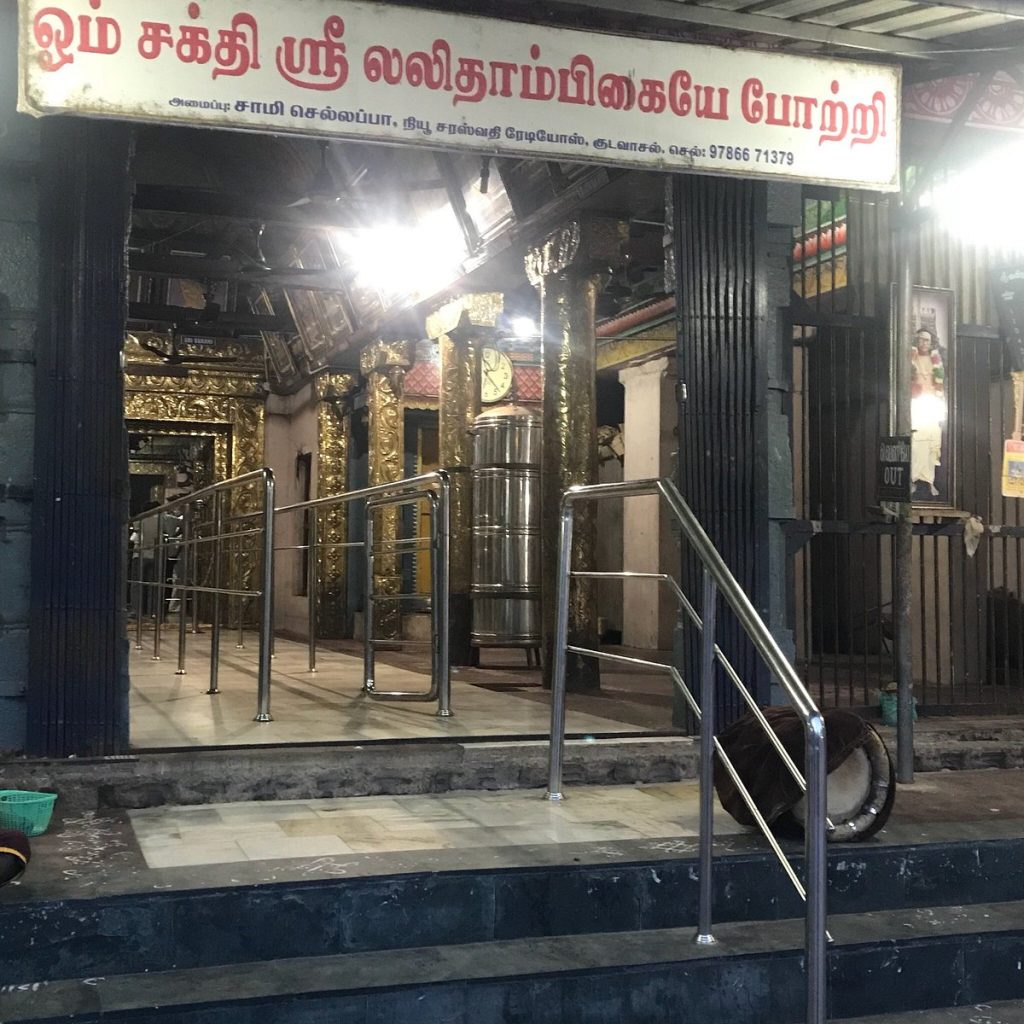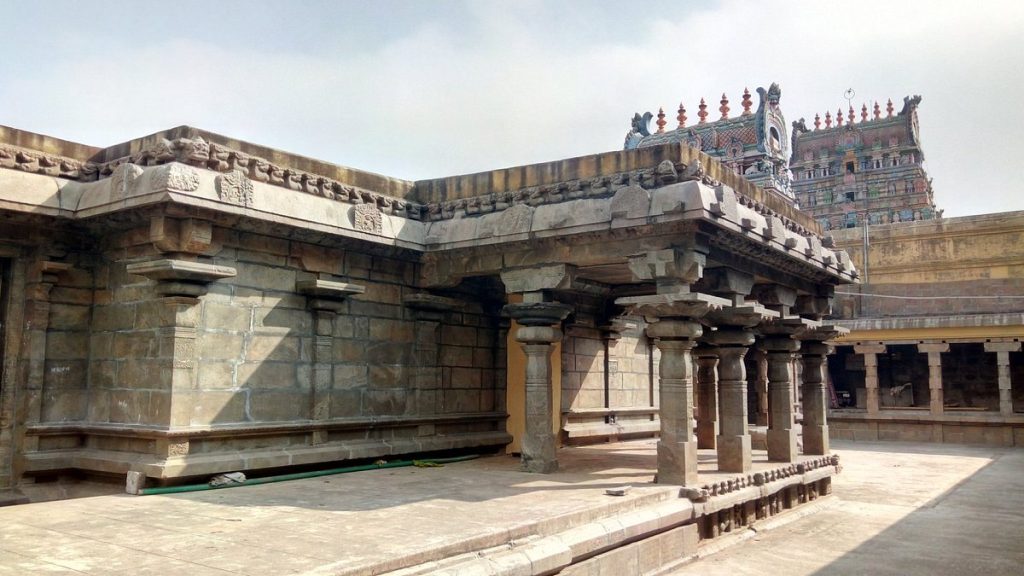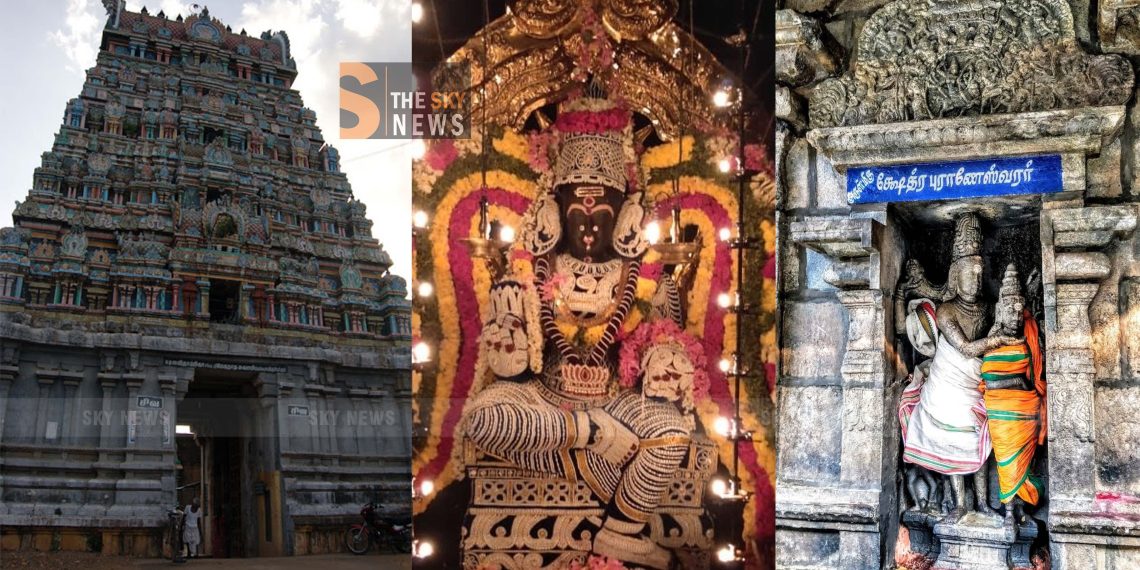The Thirumeechiyur Lalithambigai Temple, also known as the Sri Meganatha Swamy Temple, is located in Thirumeechiyur, Tamil Nadu. It is a prominent Hindu temple dedicated to Lord Shiva and Goddess Lalithambigai. Here are some key details about the temple:
Key Deities and Significance
- Main Deity (Moolavar): The presiding deity is Lord Meganatha Swamy, a form of Lord Shiva.
- Consort: Goddess Lalithambigai, an incarnation of Parvati, is worshipped here. She is also referred to as Sri Santha Nayaki.
- Unique Aspects: The temple is renowned for its unique rituals and significance. It is particularly known for the worship of Goddess Lalithambigai, who is depicted holding a sugarcane bow and flower arrows, symbolizing love and compassion.
Architectural Highlights

- Temple Structure: The temple features traditional Dravidian architecture with a majestic rajagopuram (main tower) and intricately carved sculptures.
- Sacred Tank: The temple has a holy tank called Chandra Pushkarani.
Festivals and Rituals
- Poojas and Abhishekams: Regular poojas (prayer rituals) and abhishekams (ritual bathing of the deity) are conducted.
- Navaratri Festival: A significant festival celebrated with grandeur, focusing on the worship of the Divine Mother.
- Special Worship: The temple is known for special prayers and offerings during full moon days and Fridays, which are considered auspicious for worshipping Goddess Lalithambigai.
Spiritual Beliefs and Legends

- Divine Grace: Devotees believe that worshipping at this temple can bring relief from hardships, fulfillment of desires, and overall well-being.
- Historical Legends: The temple is associated with various legends, including those from the Puranas, highlighting the divine grace and miracles attributed to the deities.
Visiting Information
- Location: The temple is situated in the village of Thirumeechiyur, near Mayiladuthurai in Tamil Nadu.
- Accessibility: The temple can be accessed via road and is close to the town of Mayiladuthurai, which has good transport connections.
For more detailed information, you can refer to resources such as Divine Temples and Hindu Religious and Charitable Endowments Department. These sources provide comprehensive details about the temple’s history, rituals, and visiting hours.



